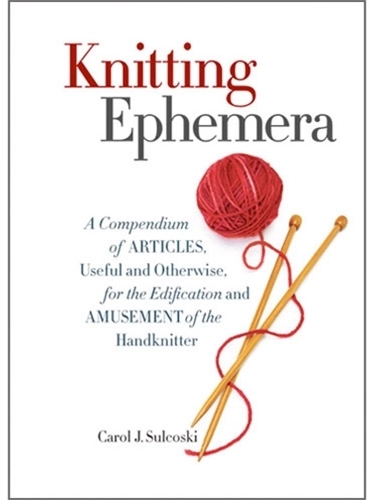
Packed with knitting-related stats, factoids, and trivia, Knitting Ephemera: A Compendium of Articles, Useful and Otherwise, for the Edification and Amusement of the Handknitter (Sixth&Spring Books) was an instant hit among knitters worldwide. Here, author Carol J. Sulcoski offers a little bit of insight into this unusual, enjoyable—but hardly ephemeral—book.
Q: What made you decide to write this kind of book, which is a bit different from your previous books, all of which contained patterns and technical advice?
A: I’ve been writing about the knitting world for quite a while, first on my blog and then for magazines like Vogue Knitting and Noro Magazine. As I did research for particular articles, I got to interview many people in the industry with fascinating stories to tell, and I also encountered interesting tidbits about the fiber world. I felt as though there was a book somewhere in there, although I wasn’t sure what form it would take. When I ran the idea by [Editorial Director] Trisha Malcolm, she immediately was enthusiastic and suggested a compilation of individual entries. It was the perfect combination.
Q: Where did you come up with the title Knitting Ephemera?
A: The definition of ephemera is small items, like tickets or programs, that don’t always get saved—they are short-lived. But often when people discover bits of ephemera, it is very valuable in helping them remember good times or evoking a sense of time and place. (Think about old Beatles memorabilia, or a bundle of old Valentines.) There is so much about the fiber world that is ephemeral—even the things we use to knit, like paper patterns or yarn made out of biodegradable materials, can be short-lived. By compiling and saving these bits of information, I hope that they will last longer rather than disappearing with time.
Q: Do you have a favorite entry in the book?
A: I don’t know that I have one in particular, but I really do love some of the more offbeat stories, like the “Sheepsquatch” that people claim to see in parts of West Virginia, or the knitting “fraternity” called Knitta Knatta Knu that some Ivy League college students started in the 1930s.
